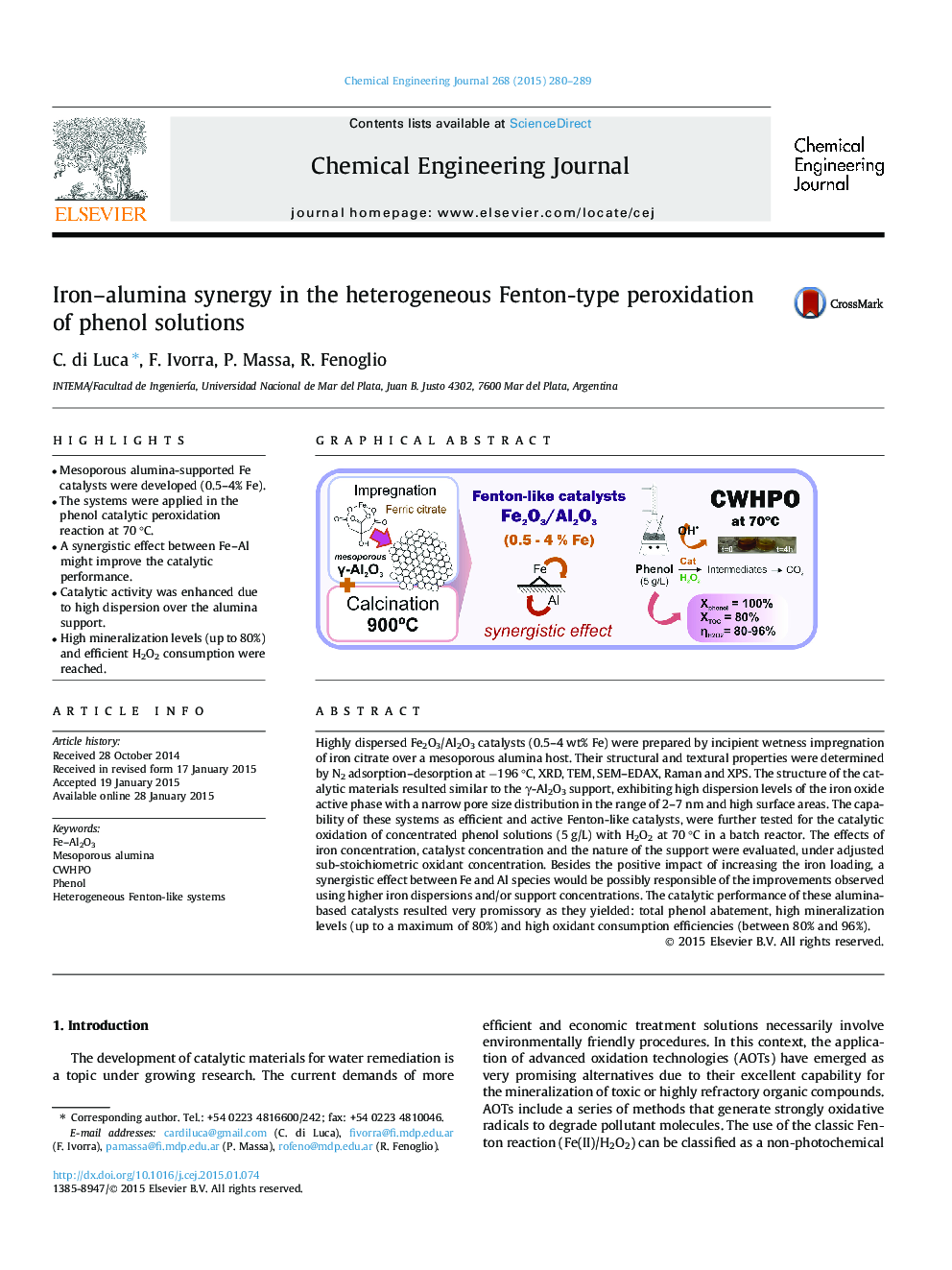| کد مقاله | کد نشریه | سال انتشار | مقاله انگلیسی | نسخه تمام متن |
|---|---|---|---|---|
| 146573 | 456373 | 2015 | 10 صفحه PDF | دانلود رایگان |

• Mesoporous alumina-supported Fe catalysts were developed (0.5–4% Fe).
• The systems were applied in the phenol catalytic peroxidation reaction at 70 °C.
• A synergistic effect between Fe–Al might improve the catalytic performance.
• Catalytic activity was enhanced due to high dispersion over the alumina support.
• High mineralization levels (up to 80%) and efficient H2O2 consumption were reached.
Highly dispersed Fe2O3/Al2O3 catalysts (0.5–4 wt% Fe) were prepared by incipient wetness impregnation of iron citrate over a mesoporous alumina host. Their structural and textural properties were determined by N2 adsorption–desorption at −196 °C, XRD, TEM, SEM–EDAX, Raman and XPS. The structure of the catalytic materials resulted similar to the γ-Al2O3 support, exhibiting high dispersion levels of the iron oxide active phase with a narrow pore size distribution in the range of 2–7 nm and high surface areas. The capability of these systems as efficient and active Fenton-like catalysts, were further tested for the catalytic oxidation of concentrated phenol solutions (5 g/L) with H2O2 at 70 °C in a batch reactor. The effects of iron concentration, catalyst concentration and the nature of the support were evaluated, under adjusted sub-stoichiometric oxidant concentration. Besides the positive impact of increasing the iron loading, a synergistic effect between Fe and Al species would be possibly responsible of the improvements observed using higher iron dispersions and/or support concentrations. The catalytic performance of these alumina-based catalysts resulted very promissory as they yielded: total phenol abatement, high mineralization levels (up to a maximum of 80%) and high oxidant consumption efficiencies (between 80% and 96%).
Figure optionsDownload as PowerPoint slide
Journal: Chemical Engineering Journal - Volume 268, 15 May 2015, Pages 280–289